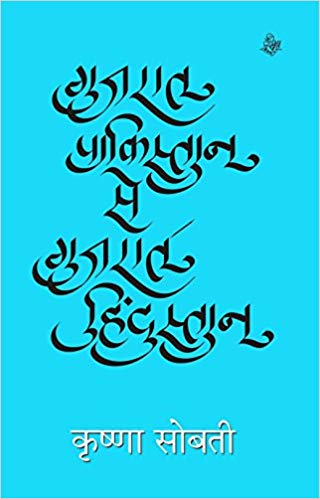Every once in a while, a great writer provides a glimpse into her life, and what that reveals may not be profound but its banality may have new lessons for us. As I read this book not only for the purposes of the review but also to understand what else Partition literature could possibly tell us, I have come away with a single word that will stay with me beyond the life of the book. Sobti asks herself quite frequently, ‘Kya hua, kyun anmani si ho?’ (What happened again, why are you so listless?) The ennui was also one of the responses to Partition. At a young age when Sobti saw the emptying out of her world, as her Muslim friends and acquaintances left Delhi, while she had to leave Gujarat in Pakistan behind, the changes were overwhelming. If in the tongues of some, Partition was reduced to the unspeakable and gibberish, Sobti appears very much put together, but just filled with ennui and listlessness. She watches life around her; deaths, betrayals, displacement and pushes them to the back of her mind only to encounter them as ghosts and nightmares. What this does to the narrative style of the novel is quite interesting, as time moves between past and present and the gaze anchors itself on the arid landscape of Rajputana where she goes to work in postcolonial India. Majority of the book is based in this Princely State and feudal and royal family of Rajputana that struggles with its own role and waning significance after Independence.
Krishna Sobti, as most of you would know, is one of the most established names in the history of Hindi literature. Mitro Marjani, Zindaginama and Ai Ladki are some of her much acclaimed works. Hence to read a snippet of her life, spanning barely a few years, after all these years came to me with promise. While the memoir does not deliver very satisfactorily on literary counts, it certainly opened up some new questions of territory, belonging and memory. The book begins with a map of undivided and divided India, signalling thereby through both the title and maps its location in Partition literature. On a still and pensive afternoon in Delhi when names of roads were not changed from Keeling to Tolstoy Marg, or Curzon to Kastruba Gandhi Marg, Manjali (perhaps Sobti herself) was cutting out pictures of leaders. The street was quietly emptying out, as Kureshi and Rahat Haider and others left by tongas. The hooves tapped away in the stillness. By the end of the chapter she has heard accusations against those whose pictures she had painstakingly cut to paste in her sketchbook, perhaps. Little is said, more understood and this pensiveness characterizes the rest of the book. Intermittently we come across a song such as this that critiques caste in both Hinduism and caste-like hierarchies in Islam:

